If you’re on the hunt for a high-protein, gluten-free twist on pizza night, cottage cheese pizza crust might just become your new obsession. This trend is popping up everywhere—and for good reason. It’s packed with protein, simple to make, and a delicious alternative to traditional dough.
In our house here in the Hudson Valley, every dinner feels like a bit of a balancing act. A few years back, when gluten had to leave our table, I knew our favorite Friday pizza nights needed a makeover. With Emma’s picky tastes and Chloe’s growing appetite, I’ve made it my mission to reinvent classics like pizza in a way that feels just as cozy and satisfying—but with a healthier spin.
As a food-loving mom with a family that loves bold flavors and hearty meals, I’m always testing ways to sneak in extra nutrition without sacrificing flavor. Today, let’s dive into why cottage cheese pizza crust protein is gaining so much love, how it stacks up nutritionally, and how you can make it at home.
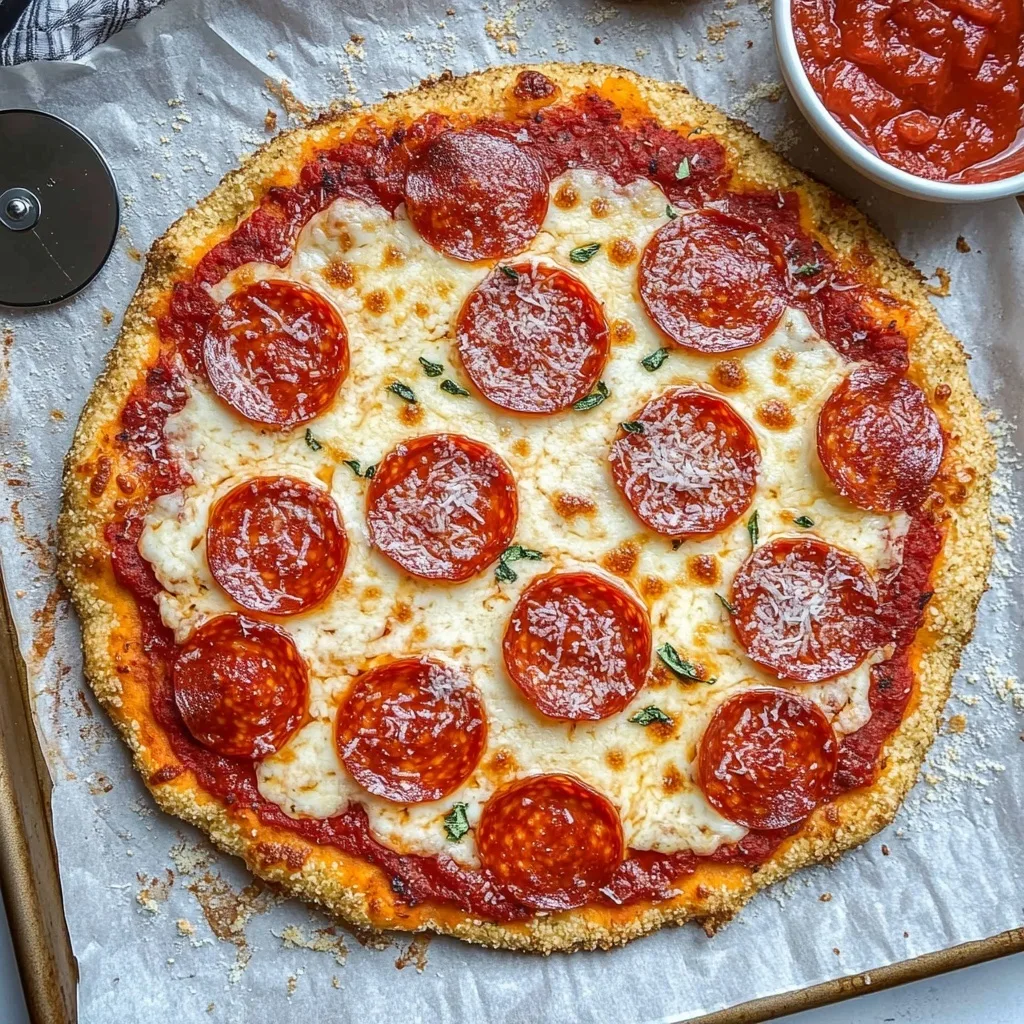
Explore the Steps
Why Cottage Cheese Pizza Crust Protein Became Our New Family Favorite
From Cravings to Creativity: How It All Started
Before gluten left our family table, Friday night pizza was a sacred ritual. We’d spread out on the living room floor with slices on paper plates, the girls giggling over cheesy bites while my husband and I savored a quiet end to the week. But when gluten had to go, that ritual hit a wall.
At first, we tried every gluten-free pizza crust out there. Most tasted like cardboard and left us longing for something better. One night, while scrolling for high-protein dinner ideas, I stumbled upon a recipe featuring cottage cheese pizza crust protein as the star ingredient. I was skeptical. Could cottage cheese really hold up as a crust? But curiosity won.
With a bit of trial, a lot of error, and some serious countertop messes, I gave it a shot. The first bite was a revelation. The cottage cheese pizza crust protein baked up golden, with a chewy center and crisp edges. Emma, my pickiest eater, actually asked for seconds. That’s when I knew we’d found our new Friday night favorite.
The Protein Win: How Cottage Cheese Changed Pizza Night
What really sealed the deal was the protein punch. As a mom, I’m always sneaking extra nutrients into meals. Compared to regular gluten-free pizza bases, this cottage cheese pizza crust protein delivers serious staying power—about 20 grams of protein per slice depending on the recipe.
Chloe, our little ball of energy, loved how filling it was. No post-dinner snack raids on the pantry. My husband, usually skeptical of any “healthy twist,” gave it a thumbs-up on both taste and texture.
This simple ingredient swap didn’t just solve our gluten-free problem—it turned pizza night into a protein-packed, family-approved tradition.
PrintCottage Cheese Pizza Crust Protein: High-Protein, Healthy & Delicious Alternative
This high-protein cottage cheese pizza crust is gluten-free, easy to make, and perfect for family pizza night.
- Prep Time: 10 minutes
- Cook Time: 35 minutes
- Total Time: 45 minutes
- Yield: 2 servings
- Category: Main Course
- Method: Baking
- Cuisine: American
- Diet: Gluten Free
Ingredients
– 1 cup cottage cheese (low-fat, small curd)
– 2 large eggs
– 1/4 cup flour of your choice (I used all-purpose)
– 1 teaspoon onion powder
– 1 teaspoon garlic powder
– 1/2 teaspoon dried oregano
– 1/2 cup pizza sauce or marinara
– 3/4 cup low-fat pizza cheese blend or shredded mozzarella
– 2 ounces turkey pepperoni
– 1 tablespoon grated Parmesan (optional, to garnish)
– Black pepper (optional)
Instructions
1. Preheat the oven to 350°F and line a sheet pan with parchment paper.
2. In a large bowl, add the cottage cheese, eggs, flour, onion powder, garlic powder, oregano, and optional black pepper.
3. Stir with a spatula until fully combined. No need to blend—just a smooth texture.
4. Transfer the mixture onto the sheet pan. Spread into a round pizza shape, not too thin.
5. Bake for 25-30 minutes until lightly golden brown. Let sit for 1-2 minutes.
6. Spread the pizza sauce over the baked crust, then top with shredded cheese.
7. Add turkey pepperoni slices evenly over the top.
8. Bake again for 5-7 minutes until cheese is fully melted.
9. Garnish with Parmesan or chili flakes if desired. Enjoy!
Notes
– For best results, use small curd cottage cheese. Both low-fat and full-fat work well.
– Use any flour like all-purpose, oat, whole wheat, or gluten-free flour.
– Any shredded cheese works—Pizza Blend or mozzarella are great options.
– Top with your favorite toppings like mushrooms, onions, or more veggies.
– Let the crust sit for a couple of minutes after baking before adding sauce.
– For a low-carb option, skip the flour. The crust will be softer but still delicious.
Nutrition
- Serving Size: 1/2 pizza
- Calories: 421 kcal
- Sugar: 5g
- Sodium: 1617mg
- Fat: 16g
- Saturated Fat: 8g
- Unsaturated Fat: 7g
- Trans Fat: 0.02g
- Carbohydrates: 28g
- Fiber: 2g
- Protein: 40g
- Cholesterol: 258mg
The Protein Benefits of Cottage Cheese Pizza Crust
How Much Protein Does Cottage Cheese Pizza Crust Have?
One of the biggest reasons we fell in love with cottage cheese pizza crust protein is the nutritional upgrade it brings to our table. Most recipes pack around 20 grams of protein per slice, and some versions—even ones we’ve tried at home—reach up to 51 grams of protein per serving depending on toppings and mix-ins.
Compared to regular pizza dough, which offers only about 6 to 8 grams of protein per slice, this crust turns pizza into a satisfying, high-protein meal. The combination of cottage cheese with ingredients like eggs and gluten-free flour is what makes the cottage cheese pizza crust protein content so impressive.
According to nutrition experts from Healthline, adding protein-rich ingredients like cottage cheese to meals can help with muscle repair, satiety, and overall health—making this cottage cheese pizza crust protein recipe a smart choice for families.
Cottage Cheese vs Regular Pizza Dough: A Protein Comparison
Here’s a quick look at how cottage cheese pizza crust protein stacks up against traditional wheat-based crusts:
| Type of Crust | Protein (per slice) | Calories | Carbs |
|---|---|---|---|
| Cottage Cheese Pizza Crust | 20–51 grams | 150–220 calories | 6–10 grams |
| Traditional Wheat Pizza Crust | 6–8 grams | 180–250 calories | 20–30 grams |
Making the switch to cottage cheese pizza crust protein means you’re more than doubling your protein intake per slice. This is ideal for anyone following a high-protein, low-carb, or gluten-free diet.
For our family, the bonus was how full and satisfied we felt after dinner—no late-night snacking needed.
How to Make a High-Protein Cottage Cheese Pizza Crust
Simple Ingredients That Boost Protein
Making cottage cheese pizza crust protein at home is surprisingly easy and uses ingredients you probably already have in your kitchen. The beauty of this recipe is that every component contributes to that protein boost we’re after.
Here’s what you’ll need for a basic crust:
- Cottage cheese (1 cup, full-fat or low-fat)
- Eggs (2 large)
- Gluten-free flour or almond flour (½ cup for structure)
- A pinch of salt
- Garlic powder and Italian seasoning (optional, for flavor)
The star, of course, is the cottage cheese. Its naturally high protein content forms the backbone of this crust. The eggs help bind everything together, making the texture chewy but stable. For even more protein, you can sprinkle a bit of shredded mozzarella right into the dough.
For a detailed guide on ingredient ratios and tweaks, check out my full post on how to make pizza crust from cottage cheese.
Step-By-Step Process for the Perfect Texture
Once your ingredients are ready, making the cottage cheese pizza crust protein version is a breeze:
- Preheat your oven to 400°F (200°C). Line a baking sheet with parchment paper to prevent sticking.
- Blend the cottage cheese and eggs until smooth. A food processor works best, but a hand blender does the trick too.
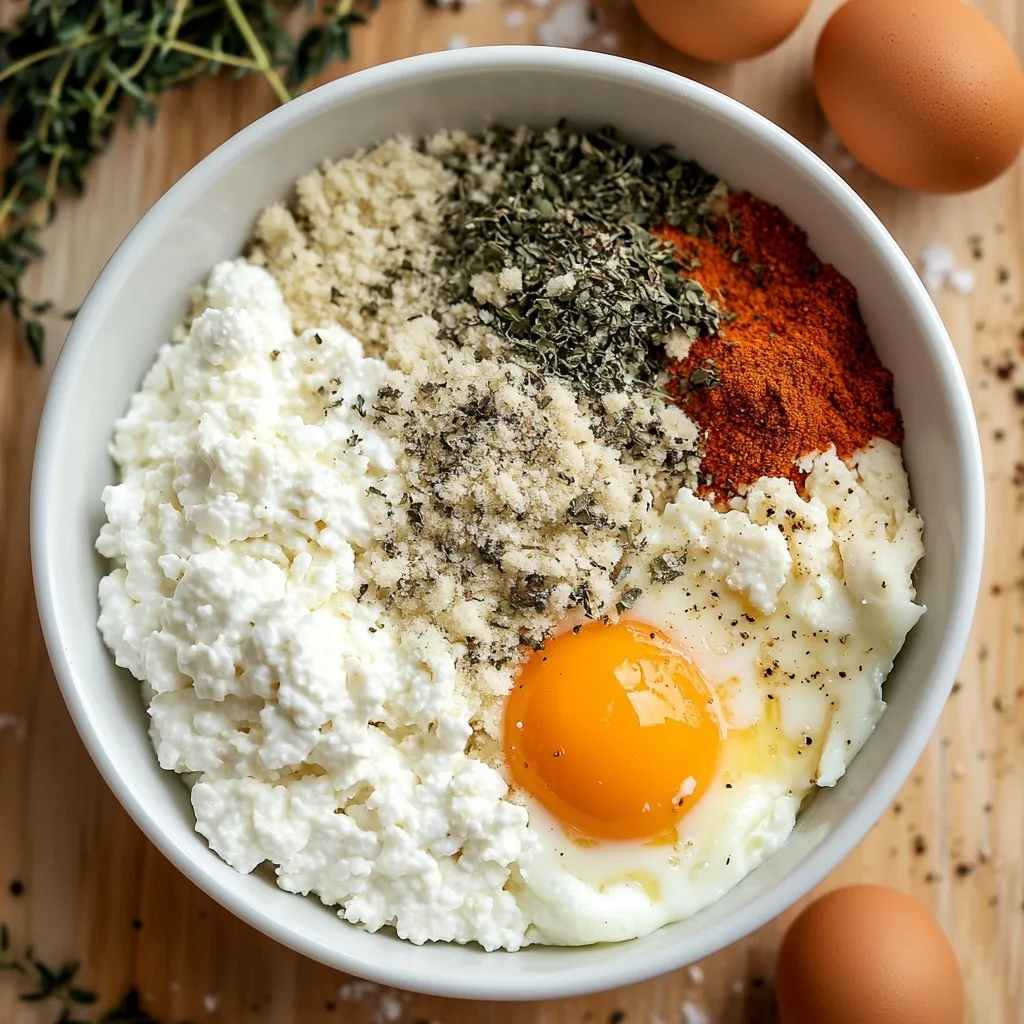
- Stir in the flour, salt, and seasonings until well combined. The mixture will be thicker than pancake batter but looser than traditional pizza dough.
- Spread the mixture evenly onto your prepared baking sheet, shaping it into your desired pizza size and thickness.
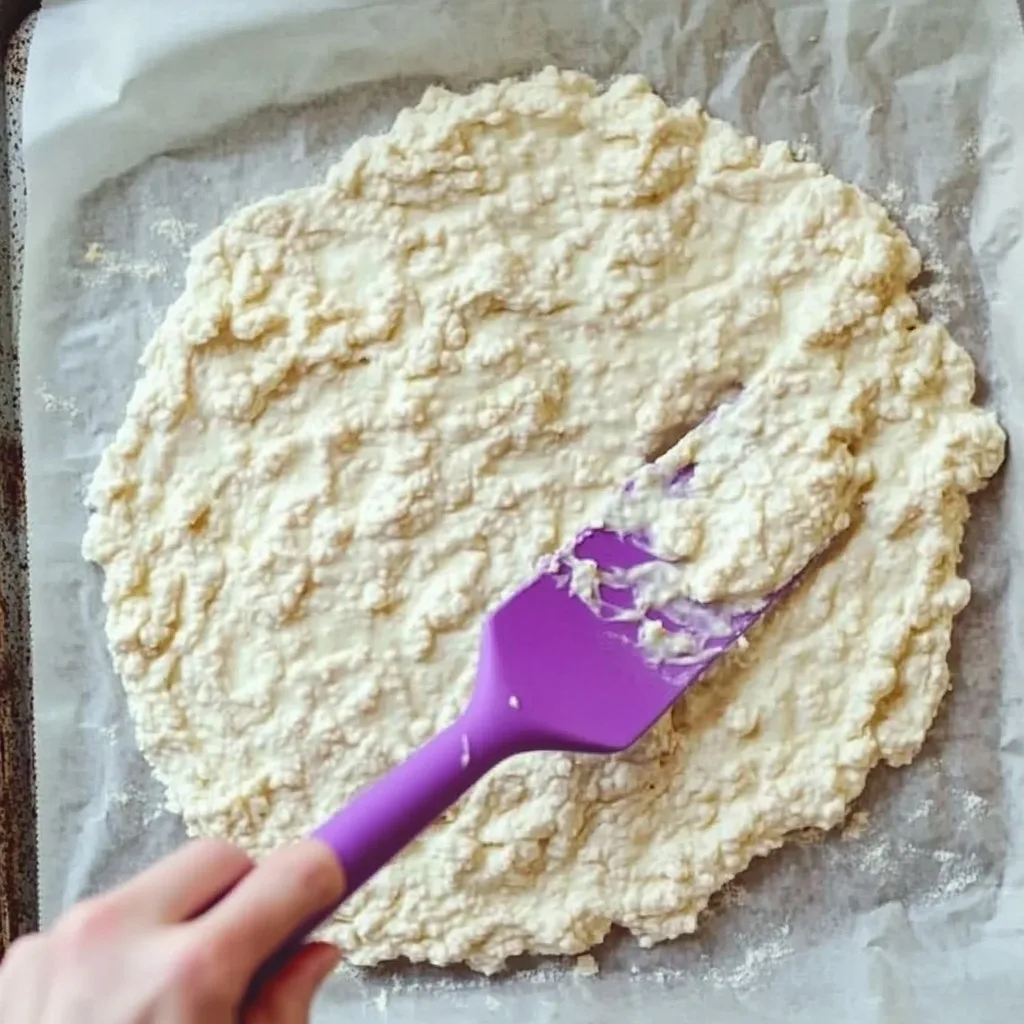
- Bake for 20–25 minutes until the edges turn golden brown and the center feels set.
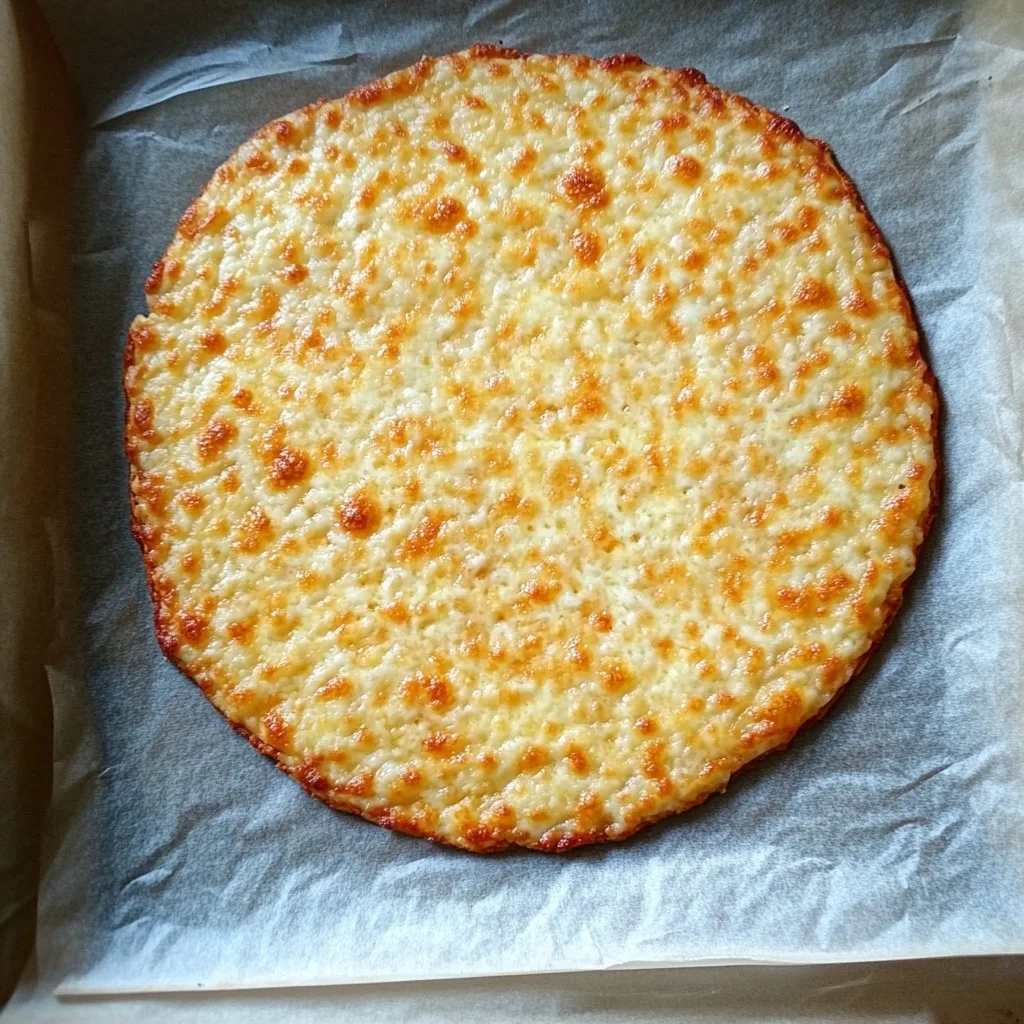
- Remove from the oven, add your favorite sauce, cheese, and toppings, then return it to the oven for an additional 5–10 minutes until everything is hot and bubbly.
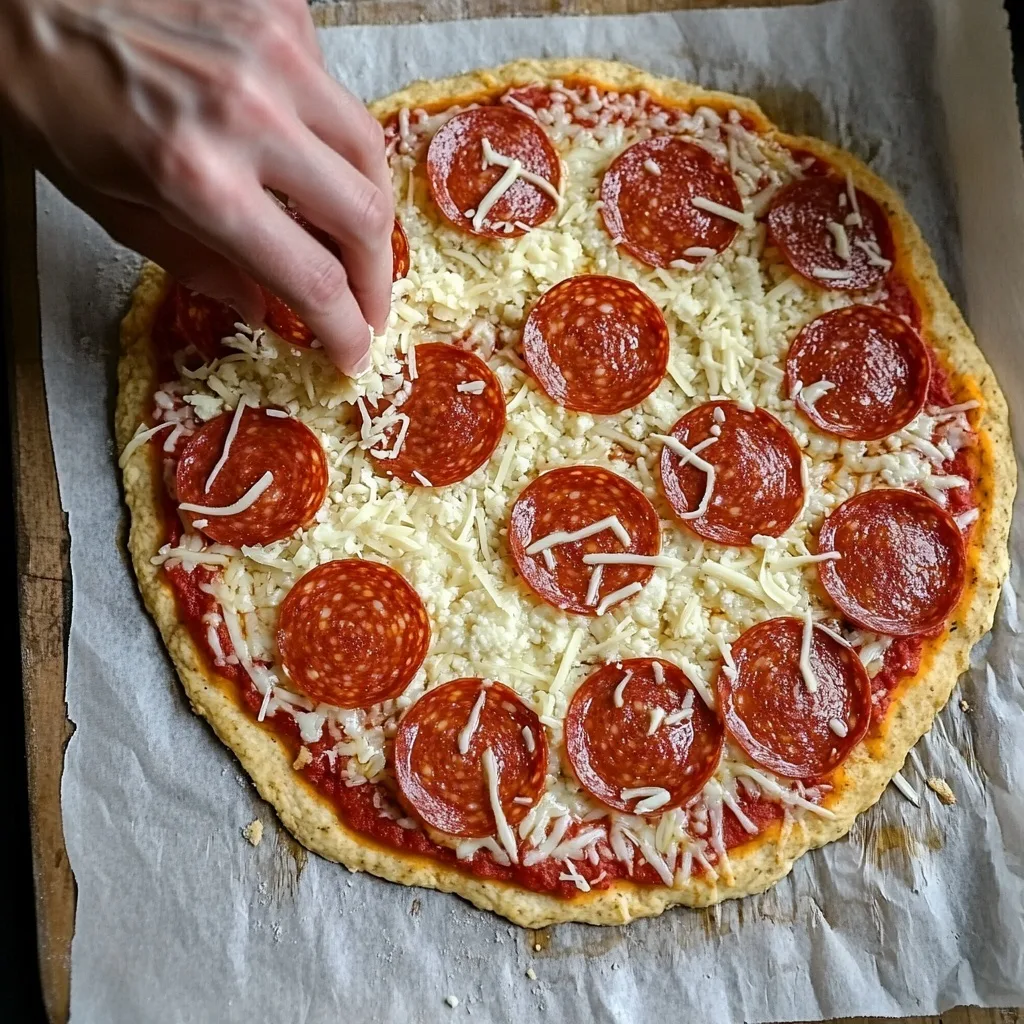
The result? A sturdy, flavorful, and high-protein pizza base that holds its toppings beautifully. Whether you’re making a quick weeknight dinner or prepping for weekend movie night, this cottage cheese pizza crust protein recipe will quickly become part of your rotation.
Delicious Ways to Enjoy Your Cottage Cheese Pizza Crust
Broccoli Cottage Cheese Pizza Crust: A Green Twist
If you’re ready to take your cottage cheese pizza crust protein game up a notch, adding veggies is the way to go. One of our family’s favorite variations is the broccoli cottage cheese pizza crust. It sneaks in extra fiber and nutrients without making the crust too heavy.
To make this, simply blend about 1 cup of steamed and drained broccoli into your cottage cheese mixture before baking. This adds vibrant color and a mild, earthy flavor that pairs perfectly with garlic and Parmesan toppings.
The texture remains sturdy, and the added veggies boost the nutritional profile even further. Emma loves topping this version with mozzarella and cherry tomatoes, while Chloe insists on a sprinkle of extra Parmesan for good measure.
For step-by-step details, check out my full post on broccoli cottage cheese pizza crust.
Other High-Protein Topping Ideas
Another reason we love cottage cheese pizza crust protein is how versatile it is. Once your crust is baked, the topping possibilities are endless—and they’re a great opportunity to layer in even more protein.
Here are some family-approved ideas:
- Grilled chicken breast with spinach and feta for a Mediterranean twist
- Turkey pepperoni with extra mozzarella for a classic, kid-friendly choice
- Scrambled eggs and veggies for a breakfast-for-dinner pizza
- Roasted chickpeas and kale for a vegetarian, protein-packed option
The sturdy texture of the crust holds everything beautifully, even with heavier toppings. Plus, with every bite, you’re getting a good hit of cottage cheese pizza crust protein, keeping everyone full and satisfied.
Experiment with your favorite flavors, and you’ll quickly see how this high-protein crust can become your go-to for any pizza night.
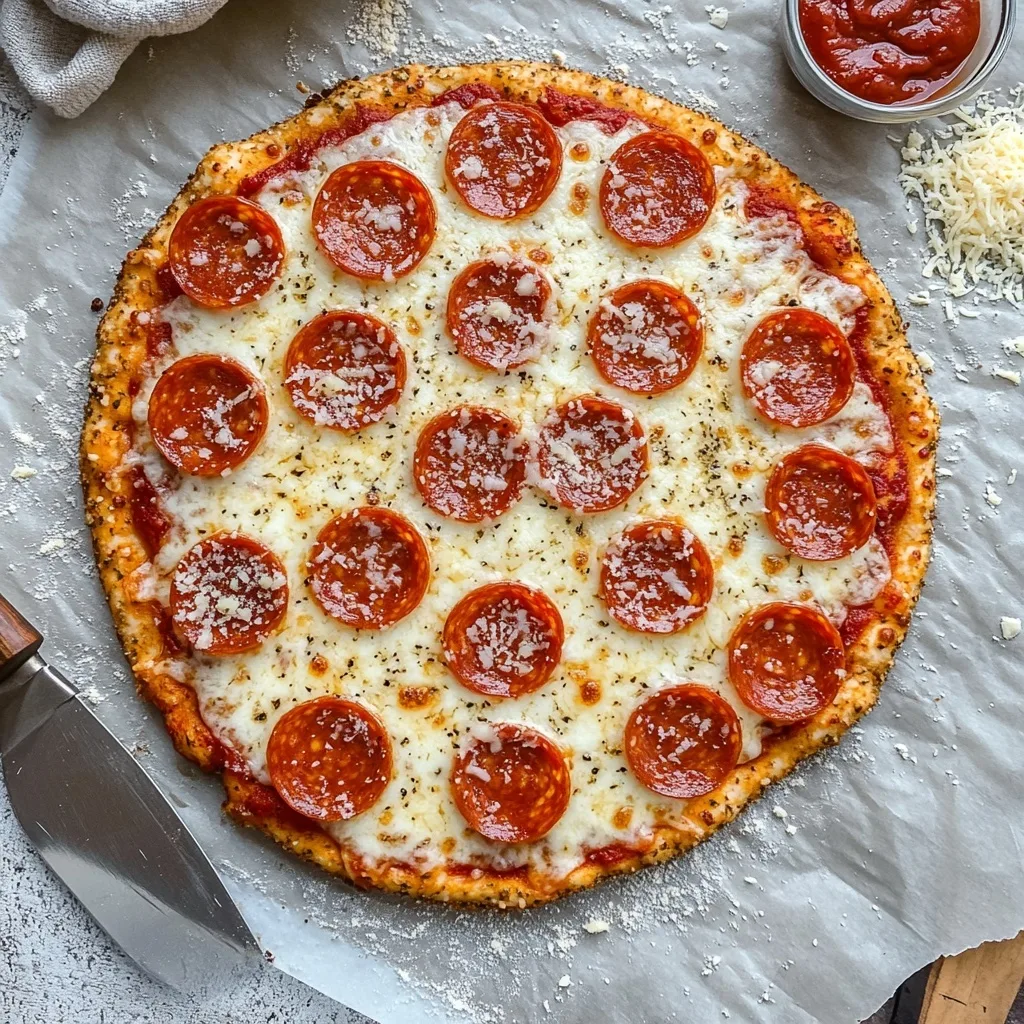
Frequently Asked Questions About Cottage Cheese Pizza Crust Protein
How much protein is in cottage cheese pizza?
Cottage cheese pizza can offer anywhere from 20 to 51 grams of protein per serving, depending on the exact recipe and toppings you use. Most of the protein comes from the cottage cheese and any additional ingredients like eggs or cheese mixed into the crust.
How much protein is in a pizza crust?
Traditional pizza crust made with wheat flour typically contains only 6 to 8 grams of protein per slice. In contrast, a cottage cheese pizza crust protein recipe dramatically increases that number, often delivering two to three times more protein per serving.
Can you use cottage cheese for pizza crust?
Absolutely! Cottage cheese is not only a great gluten-free binder, but it also brings moisture, flavor, and a serious protein boost to your crust. By combining it with eggs and a gluten-free flour of your choice, you’ll get a crust that’s both sturdy and delicious.
Is cottage cheese pizza good for you?
Yes, cottage cheese pizza crust protein recipes are a healthier alternative to traditional dough. They’re lower in carbs, higher in protein, and packed with nutrients like calcium and vitamin B12. It’s a smart choice for families looking to make pizza night more nutritious.
Conclusion
Swapping out traditional dough for cottage cheese pizza crust protein has completely transformed pizza night in our house. It’s filling, flavorful, and fits beautifully into a gluten-free, high-protein lifestyle. From Emma’s picky approval to Chloe’s unstoppable energy afterward, this crust has won everyone over.
If you’re looking for a cozy, nutritious meal that keeps your family satisfied, this recipe is one worth trying. Whether you stick to classic toppings or get creative with variations like our broccoli version, one thing’s for sure—pizza night will never be the same again!

